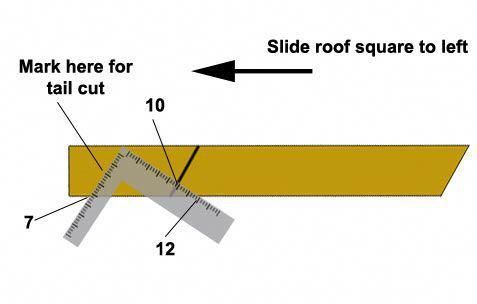Draw a line at right angles to the bird s mouth plumb cut starting 3 inches up from the bottom of the rafter but no more than half the thickness of the rafter.
How to cut a birdsmouth in a roof rafter.
With this information determined and the rafter ends cut to the proper pitch lay out of the bird s mouth is fairly easy.
Make one rafter that has the bird s mouth cut in place and extends out past that for your roof overhang test fit it in place and mark it pat for pattern rafter to use in cutting its sisters.
The ridge cut also called the plumb cut at the top of the rafter the birdsmouth cut which itself comprises 2 different cuts where the rafter meets the building s wall and the tail cut at the base of the rafter.
Make a mark along the top edge of the rafter where this measurement ends.
Calculate rafter or joist length to birdsmouth location.
Subtract half the width of the ridge board beam in this case 0 5 inches.
Measure and mark plumb cut.
Use a square placing one side against the plumb cut line.
This point is the start of the bird s mouth.
Take a break from the measuring by cutting the top end of the rafter first.
Possibly the most satisfiying part of the roof yet.
Multiply the figure from above by it s square and do the same for the height to the top.
When you cut the rafters you ll need to make 3 separate cuts.
In my photo above the green rafter line length is from the plumb cut face or ridge board face to the plumb cut face of the bird s mouth notch.
This new line marks the horizontal cut for the bird s mouth.
With the ripped strip installation there would be no horizontal bearing surface to resist that force.
Divide the width of building by 2 e g.
72 inches wide divided by 2 36 inches.
Granted a structural ridge can lessen the amount of force on a rafter but even then i would.
A lot of force is transferred down the length of the rafter and the seat cut on the birdsmouth transfers that force directly to the top plate.
This ensures that you make the birdsmouth cut at the right length in the rafter.










